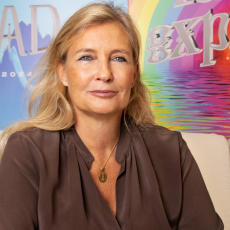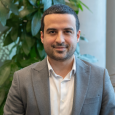Can you briefly summarize the 50-year journey of Intercos?
The journey began with my father’s visionary approach to cosmetics in the 70s. He noticed the industry trend of big brands having their own R&D and manufacturing setups. Pivoting from this, he conceptualized an Italian lab that would be agile and innovative, rapidly adapting to trends, and formulating products that brands needed. We began modestly in Italy and soon garnered attention from French brands, cementing our place in the prestige cosmetics sector. However, the real turning point came when American companies took notice. They offered us large-scale volume opportunities, and our strategic partnerships there allowed for vast geographic and category expansion. From initially specializing in powders, we ventured into more complex categories like pencils and lipsticks. Our strategy has always been dynamic, keeping pace with the evolving world of cosmetics.
Given Intercos’ broad spectrum of expertise across R&D, manufacturing, packaging, and branding in the cosmetics industry, how do you manage to excel in so many domains?
Our foundation is strong R&D. We invest heavily in exploratory, applied, and developmental research. We currently operate 11 R&D labs globally and collaborate with leading universities and labs in areas like biotech. A notable venture is Vitalab, focusing on stem cell technology. Success in product development also requires diversification. Our specialized business units ensure we cover all cosmetic technologies. The mission has always been to be the leading B2B supplier with top-tier technology across all categories.
How does Intercos stay ahead of market trends?
We're fortunate to collaborate with over 700 clients worldwide, spanning three continents and covering all distribution channels. Our 16 commercial offices worldwide interact directly with major clients, gathering insights on their strategies for the upcoming three to five years. This direct contact, combined with our in-depth market analyses, google analytics, social listening, trend studies, and continuous feedback, ensures we're always two steps ahead in anticipating and meeting market demands.
What are the three key market trends for cosmetics in the upcoming years?
In the coming years, the cosmetics industry is experiencing an evolution due to several factors. Firstly, there's a strong emphasis on sustainability and cleanliness. The industry is shifting away from ingredients that have been staples for decades, such as silicones, microplastics, and talc, to more sustainable options. This requires immense R&D effort to ensure that the replacements match or even exceed the performance of their predecessors. Secondly, as the lines blur between skincare and makeup, there's an emphasis on hybrid products that bridge the gap. These products prioritize both performance and care, ensuring that users don't just look good but feel good about their skin's health. And lastly, the industry is seeing a shift in consumer behavior with a demand for products that inspire, promote wellbeing, and provide multi-functionality. The pandemic has been a pivot point, transforming the makeup landscape with a shift towards authenticity, simplicity, and functionality.
How are these trends being incorporated and what's the significance of the raw material lab in this process?
Our approach to these trends is comprehensive. Our raw material lab has been instrumental in driving our innovative formulations. This in-house facility is committed to replacing some of the traditional makeup ingredients with more sustainable options. We have been ahead of the curve in this regard, offering unique and exclusive compounds that adhere to these changing consumer demands. For instance, we moved away from certain cyclic silicones, then tackled the challenge of microplastics, and are now addressing the use of talc in powders. Another crucial area of focus is pigments. Ensuring vibrant, high-performance colors that adhere to these new standards is essential since color is at the heart of makeup.
In terms of product trends, there is an increasing focus on sensoriality, transformation, and care. The blending of skincare into makeup is manifesting in the form of primers, plumpers, and fillers among other products.
As for consumer trends, they are largely influenced by global movements and the rapid changes in the makeup industry. Post-COVID, there's a push towards reigniting the magic of makeup. For example, our recent showcases emphasized themes like "selfishness," which emphasizes individual wellbeing, and a desire for simpler routines with multi-functional products. Furthermore, sustainability is becoming a standard rather than a unique selling point, with fun being introduced to make it more appealing. Finally, there's an exploration of the metaverse and the digital influence on makeup, examining how technology impacts visuals and performance while balancing with nostalgic sentiments.
What are the key challenges you foresee ahead?
The major challenge we foresee is the transfer of our innovative technologies globally. It's not just about transferring formulas but also machinery, equipment, and building local expertise. If we can successfully supply quality products and innovations to regions like India within the next five years, it would be a significant advancement. Additionally, given the regional differences and the intimate nature of our products, it is crucial to have a regional approach to product development. Lastly, our vision extends to becoming an 'academy of makeup'. The complexity behind our product development process is often underappreciated, and we hope to educate and inspire the next generation in this art.
What are Intercos' key commercial and product plans for the next few years?
Intercos, after 50 years, is on a trajectory of constant growth. Our product strength lies in our ability to anticipate trends and develop the right products for the market. As we navigate the future, our goal is to present breakthrough innovations, to not just serve the needs of our existing customers but also to reinvent categories. We aspire to elevate our innovation, especially given the current emphasis on clean and sustainable products. Commercially, while Europe and the US remain our primary markets, Asia, particularly Korea with its innovative hubs, is becoming increasingly important.
Our recent venture into India has been promising because of their vibrant color market, contrasting the skincare-oriented market of Asia. We believe our growth in India might even surpass our achievements in Asia. Beyond this, untapped markets like Africa represent future opportunities.





